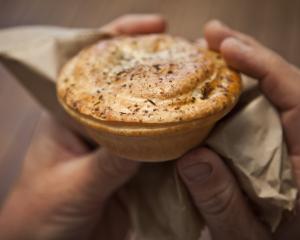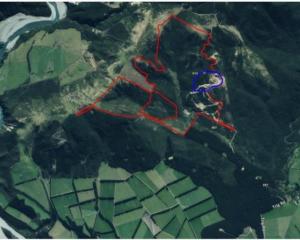
Farmers have been challenged to reduce the amount of nitrogen leaving their property through sub soils and waterways.
This has seen the adoption of more responsible fertiliser and effluent management, and, more recently, work on more efficient nitrogen uptake in plants and animals.
One of the harder sources to mitigate is nitrogen leaching from cows' urine. The concentration of nitrogen in the urine patch is so high that a significant proportion cannot be used by plants or retained in the soil root zone.
While reducing urinary nitrogen ideally involves measuring it, that is impractical to do in large numbers of cows directly - and that is where milk urea concentration (MU) comes in. Many international studies have shown a direct relationship between MU and the amount of urinary nitrogen per cow per day.
It makes sense to reduce urinary nitrogen from a farming perspective and to monitor urinary nitrogen from a regulatory perspective.
One strategy to reduce urinary nitrogen is through good feeding practices and to monitor these by keeping an eye on milk urea concentration,
And a second strategy is where CRV Ambreed's genetics comes in.
CRV Ambreed's LowN Sires programme is based on breeding dairy cows with lower levels of MU, which is expected to reduce urinary nitrogen.
''Milk urea tells us a lot. We know we can reduce milk urea through feeding, but also through genetics,'' CRV Ambreed head geneticist Phil Beatson says.
Each day farmers get a MU value measured in their bulk milk. It makes sense for farmers and regulators to use this milk urea concentration to monitor nitrogen loading from urine. Total urinary nitrogen per herd per day can be calculated based on the weighted MU and number of cows. The weighting factor to convert MU to grams of urinary nitrogen per cow per day is around seven.
''We're suggesting MUs should be used by farmers and by the likes of the environment councils to calculate nitrogen deposition quite accurately. This is likely to be a better monitoring tool than using predictive models that are subject to manipulation,'' Beatson says.
A dairy cow eats about 180kg of nitrogen a year as plant protein. About 30kg ends up as milk and a little bit to body maintenance and growth. Of the remainder, about 75 to 80kg is excreted as urinary nitrogen and the rest is excreted as faeces.
On average, around 20% (16kg) of this urinary nitrogen ends up being leached into groundwater.
Importantly, a small amount of the nitrogen in urine is converted to nitrous oxide - a long-lasting greenhouse gas. Reducing urinary nitrogen is critical to reducing both leaching and greenhouse gas emissions.
''If we feed diets that contain surplus protein we increase nitrogen intake beyond what the cow requires and this is reflected in the milk urea values for the herds.''
The average herd was around 30 units for bulk milk urea. However, some herds were consistently around 40 while others were around 20. The average cow in the herd with milk urea of 40 is peeing out around 280 grams of nitrogen per cow per day (40 x 7), while those in the herd with milk urea of 20 is peeing out around 140 grams of nitrogen per day (7 x 20).
The CRV Ambreed genetics programme involved measuring MU in a million milk samples from 200,000 cows through CRV Ambreed's herd-testing service. These records were analysed to estimate the genetic merit of the sires of the cows. The best of these sires are marketed as LowN, and CRV Ambreed is already providing farmers with semen from bulls under its LowN Sires brand.
The LowN Sires bulls were desirable for traditional traits as well as being genetically superior in reducing MU in their daughters.
Cows bred for lower levels of MU are expected to excrete less nitrogen in their urine which would, in turn, reduce the amount of nitrogen leached.
CRV Ambreed expected LowN Sires would reduce nitrogen leaching in New Zealand by 14 million kilograms a year, based on the national herd number of 5 million dairy cows.
The beauty of a genetics solution to nitrogen leaching is that farmers simply need to use semen from the LowN bulls rather than other bulls.
They can maintain all existing management practices so there is minimal additional cost for them.
However, the combination of good feeding plus LowN sires gives farmers a two-pronged attack to reduce MU and nitrogen leaching.
Reducing the national average MU value from 30 to, say, 24, would reduce urinary nitrogen deposition by 20% and have an even greater impact on nitrogen leached.














